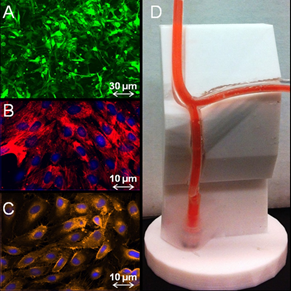Tissue Engineering and Vascular Biology
As the main avenue of providing nutrients and cellular waste removal within the human body, the vascular system has been an area of interest both in the space of disease characterization and in applications of tissue engineering. Our interests lie in probing cellular and molecular phenotypes of the vascular system to understand and recapitulate them in relevant disease models. We utilize omics, tissue engineering, and computational approaches to study cardiovascular diseases and their relationships with their microenvironments, blood flow behavior, antiproliferative treatments, and other chronic diseases such as depression. Through these multidisciplinary and collaborative methods, we can elucidate underlying complexities of the human vasculature to advance treatments for cardiovascular diseases and other intertwined conditions.




